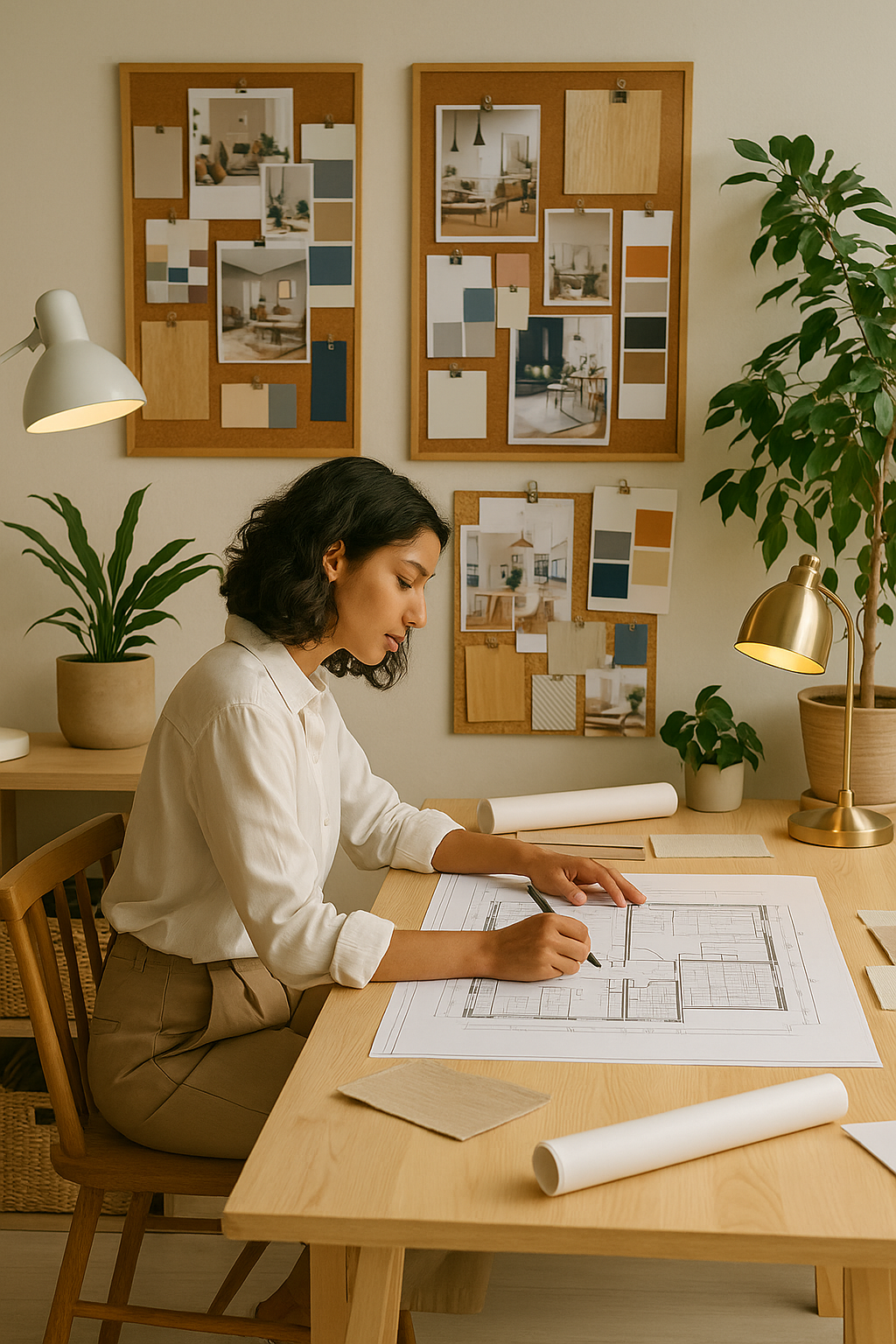Creating a new interior design scheme for a client is one thing, designing furniture or storage solutions is quite another. Many a novice has been trying to avoid the challenge by accommodation the client's needs with furniture bought "off the peg", however a design that truly suits the client's needs and interior will always be custom made.
Despite the fact that there is a great deal of precision work involved, designing furniture for your client is really not that scary. The important thing to keep in mind is that you will not do this on your own; you will have the support and knowledge of your carpenter or cabinet maker.
But let us start at the beginning: Let's assume you have had extensive client meetings where your client has expressed the wish for some very good storage solutions for a newly designed TV den.
From these meetings you know exactly what your client's needs are and you have done a comprehensive site survey meaning you have measured the space in its entirety, not just the wall the storage unit is supposed to be fitted to, you have measured the entire room with all the windows, radiators, skirting's, doors, sockets locations etc.
Your next step before you even start drawing up ideas would be (in an ideal world) to have a site meeting with your carpenter/builder/cabinet maker. Ideally this is also someone you have worked with before and know you can trust their knowledge and ability.
With your carpenter you will discuss the space and he will be able to get a feel for the space (and the structure of the walls etc.) for which he is going to build a storage unit.
Another reason you should meet with the carpenter before you put pen to paper and start designing, is so that you can pick his brain and discuss issues like: what could be fixed to the wall; which materials to use; is the floor level etc. There is no point in drawing up a beautiful design if later on the carpenter finds it impossible to fit the cupboards to a lath stud wall in an old and crumbling cottage. Of course you have the knowledge to distinguish a lath and plaster wall from a concrete block work, however you most likely will not know all the possible methods of fixing items to walls and where scribing can cover up gabs in joins and where it might be better to not fix anything to the wall.
With all the insights you have gained from your site meeting with the carpenter you can now start with your preliminary sketches for the design of the room including the custom storage.
It is always a good idea to run your drawings past the carpenter before you present them to your client, this will avoid you proposing something that your carpenter cannot build for one reason or the other.
Remember to allow for wall sockets and create false panels to hide cables if need be. Ensure that if you design cabinets with doors that the doors have enough clearance to open fully.
Once the design and style of the unit has been proposed to the client and agreed on, it is important to create detailed drawings for the carpenter showing all necessary measurements for the carpenter to be able to build the item. This will also include all specifications for material and fixtures and fittings like hinges, handles and knobs etc. To design the interior layout of the cupboard it is a good idea to get the client involved. Get them to determine what they prefer the space to be allocated to for example store their DVD's, Game's, CD's , DVD player and x boxes etc.
Of course you will know how much storage space they need and what for, to be able to design the units specifically, but you want this unit to really suit their needs so it is a good idea to get them involved at this stage to create the interior layout.
If you propose a fitted unit which needs to fit exactly into a space, it is better to let the carpenter do his own measurements and give him the design and specifications so that he can really make this unit fit into the space.
In this case your carpenter will probably call you a couple of times to double check proportion and height for shelves or units since his measurements will probably require the design to be altered very slightly to accommodate the space. If you have done your measurements carefully though and designed the unit to accommodate the space, than these changes will only be minimal.
The most important thing in designing furniture is that you have a good carpenter, take careful measurements and design something that can be built and fits your client's requirements. Once you have put all these considerations into account, the rest will fall into place and the entire process is very enjoyable.
The greatest feeling of success is when everything is fitted in place and you can say with pride that this is your design!

